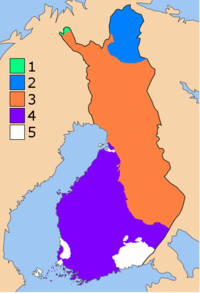
Photo from wikipedia
Large-scale layered intrusions of a peridotite–pyroxenite–gabbronorite complex, to which Cr, Ni, Cu, and PGE deposits and ore occurrences are confined, were emplaced into the Baltic paleocontinent 2.50–2.45 Ga. Layered intrusions… Click to show full abstract
Large-scale layered intrusions of a peridotite–pyroxenite–gabbronorite complex, to which Cr, Ni, Cu, and PGE deposits and ore occurrences are confined, were emplaced into the Baltic paleocontinent 2.50–2.45 Ga. Layered intrusions in the Monchegorsk Ore District, including the Monchepluton and Imandra–Umbarechka Complex, as well as the gabbro-anorthosite complex of the Main Ridge, were analyzed earlier geochemically and isotopically. In the present paper, the authors analyze layered intrusions in the Kola region (Mount Generalskaya) and Karelia (Kivakka, Kovdozero, and the Burakovsky Pluton). The primary composition of mantle magmas for the layered intrusions is assumed to be identical to that of the komatiitic basalts making up the volcanogenic units of the Vetreny Belt and the Imandra–Varzuga zone. A general model for the formation of layered intrusions includes superplume uplift in the early Paleoproterozoic, the generation of mantle magmas and their injection into the lower portion of the earth crust, the formation of deep-seated and intermediate magma chambers, and the intense contamination of the granulite–metamorphic complex followed by the generation of magma chambers provoked by single or multiple injections.
Journal Title: Minerals
Year Published: 2023
Link to full text (if available)
Share on Social Media: Sign Up to like & get
recommendations!